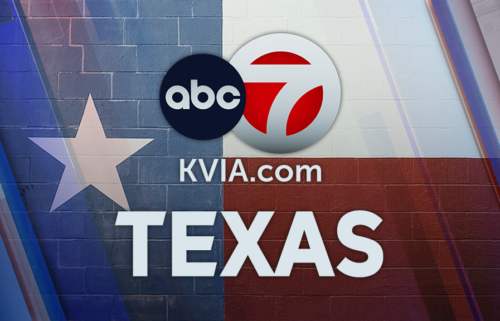SoFi CEO: It’s time for employers to take a stake in veterans’ financial well-being

SoFi CEO says 'It's time for employers to take a stake in veterans' financial well-being.
Opinion by Anthony Noto for CNN Business Perspectives
There’s something not many people know about me: Financial stress was a very real, and very prominent, part of my life at one point. In fact, it came into my life before I landed a job, joined the military or had any sort of paycheck.
I was 3 when my parents got divorced and at the time, my mom hadn’t graduated from high school. We were free lunch kids who were on welfare and used food stamps for a while. We struggled financially to have what we wanted, and as I prepared to apply for college, I set my sights on West Point and after that, Ranger School.
The financial stress I felt before ever working a day in my life was something that never left me when I joined the Army or when I decided to take my first private sector job. Years later, I was shocked and disappointed to learn of the financial struggle so many veterans face during that same transition to the private sector.
In fact, recent research has confirmed veteran families struggle to maintain adequate emergency savings funds, with nearly half (49%) of those who receive no pension reporting they have less than $500 in their emergency savings (and nearly one in four families who receive a pension reporting the same).
Serving our country can cause unique financial challenges down the road. For some, these financial limitations last far beyond their initial transition into the post-military working world. Frequent moves can make it difficult for military spouses to find jobs that offer a steady, second source of income, limiting families to one paycheck. This leaves them unable to invest as much in retirement or savings even in the years after leaving service.
Of course, there’s no perfect answer to how businesses can solve the unique mix of challenges our veteran workforce faces, but there is so much more we — private sector employers and business leaders — can do to support the men, women and families who serve our country, from the day when they first leave the military and beyond.
Here are a few straightforward places they can start:
Retirement savings
Many servicemembers wait to pursue higher education until after they transition out of military service. While this is a wise decision for veterans — especially given the opportunity to leverage GI Bill benefits, which include financial assistance for college — it also means their retirement savings “clock” may start much later in life if they opt out of military retirement savings. Waiting until they take on their first private sector job to begin maximizing the benefits of an employer-sponsored retirement account only makes “catching up” more challenging.
Offering access to retirement savings vehicles can help veterans understand what the transition into civilian life means for their retirement and overall financial well-being. And offering a 401(k) contribution or matching program will give veterans the extra savings boost they need if they started saving late or if they weren’t able to serve long enough (because of injury, trauma or otherwise) to secure a pension that they could count on for the future.
Offering retirement savings benefits doesn’t have to come at a huge cost, though. Companies can take a more flexible approach to existing retirement savings benefits, like employer-matching 401(k) contributions, which allow the employer to make matching contributions even if the employee isn’t making any contributions to the plan themselves — so long as (s)he is making payments toward their student loan debt. In other words, employees who are so burdened by paying off student debt that they’re not voluntarily contributing to their workplace 401(k) plans could still receive an employer-matching contribution to that retirement plan.
Although this approach currently requires IRS permission via a Private Letter Ruling, there is legislation under review on Capitol Hill that would make the process much easier for companies.
Debt management
Many young enlisted servicemembers have past due payments or derogatory marks on their credit record when they leave the military. Providing access to educational material allows veteran employees to proactively improve their own financial literacy and — in some cases — help address financial mishaps that may continue to plague their financial future if left unaddressed.
Companies should also consider connecting employees with a network of financial planners, who can provide unbiased guidance and advise veterans on the best approach to managing and paying off debt. This will give them a personalized approach to fostering a better financial future.
Educational assistance
Despite the many policies, programs and benefits available to veterans, a report found that they are less likely to attend a four-year college or university when compared to their civilian counterparts. This drop-off in veteran participation in higher education could have a negative, compounding effect on veterans’ financial future, if left unaddressed.
What’s more, a recent analysis of U.S. Department of Education data from The Pew Charitable Trusts confirmed that 27% of student veterans took out private student loans during the 2015-2016 academic year. And the debt they’re taking on is substantial. Undergraduate veterans borrowed a median amount of $8,000, $500 more than their civilian counterparts.
Employers can address the veteran higher education crisis by incorporating well-being programs that address the past, present and future educational costs that are making the path to financial independence even more complicated for veterans (and others). These programs are typically structured to include student loan debt contributions (past), tuition reimbursement programs (present), and 529 college savings plans (to help a child or another dependent afford the cost of college in the future).
As the colliding worlds of work, company culture and education continue to evolve, our definition of well-being — and efforts to support veterans’ unique needs — will need to do the same. In the meantime, ensuring resources are allocated toward programs that provide a mix of short- and long-term impact, while also delivering measurable, mutual benefit to both employers and employees, will foster a brighter financial future for all.
Correction: A previous version of this article misstated the source of the analysis of U.S. Department of Education data. The correct source is The Pew Charitable Trusts.
The-CNN-Wire
™ & © 2021 Cable News Network, Inc., a WarnerMedia Company. All rights reserved.

